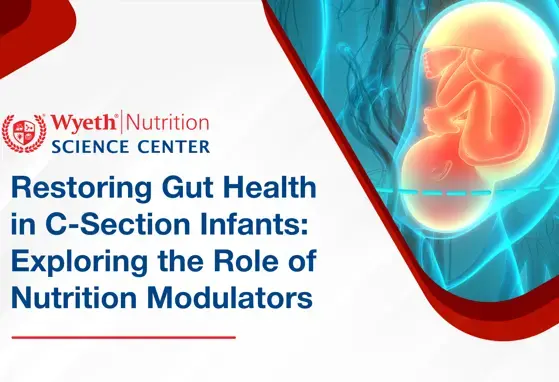[Hot Science] Randomized clinical trial on bovine milk oligosaccharides (BMOs) supplementation, intestinal biomarkers and microbiota

In this newly published randomized clinical trial (RCT), bovine milk oligosaccharides (BMOs) was the only component which differed between the test formulas, hence, potentially the main driver for the observed effects on intestinal biomarkers and microbiota of the infant subjects.
Method
Part I. Healthy full-term infants were enrolled at birth and randomized within the first 48 hours to receive one of the following interventions,
- Control group (n = 40) – standard formula
- FLP group (n = 44) – standard formula + bovine lactoferrin at 1 g/L + Bifidobacterium animalis ssp lactis CNCM I-3446 (B. lactis) at 3.7 x 104 CFU/g powder formula
- FLPP group (n = 43) – FLP formula (same levels of lactoferrin and B. lactis) + bovine milk oligosaccharides (BMOs) at 6 g/L
- BF group (n = 75) – breastfed infants as reference
Part II. Washout period
- All test formula groups received a low protein starter formula with 67 kcal/100 mL energy, 1.8 g/100 kcal protein and 5.3 g/100 kcal fat
- BF group remained breastfed
Part III. Data collection at weeks 1, 2, 4, and 8, including one or more of the below parameters:
- Growth, digestive tolerance, adverse events
- Gut barrier function maturation
- Stool microbiota profile
Key Findings
Growth
- All groups had comparable anthropometric parameters at baseline
- No significant differences were observed between groups post-intervention
- All growth parameters followed the WHO standard curves
Adverse events,
- No differences in reported adverse events between groups
Digestive tolerance,
- FLPP group showed less hard and formed stools and more soft stools as compared to control and FLP groups during intervention period
- There were no significant differences between the different feeding groups for spitting-up and vomiting frequencies, infant’s crying time and colic frequency
Gut barrier function maturation,
- Compared to BF group, infants fed BMOs (i.e. FLPP group) had lower calprotectin levels along the intervention peiod
- Infants fed BMOs (i.e. FLPP group) also had elastase and α-1Antitrypsin (AAT) levels closer to breastfed infants during the intervention period, while concentrations were higher in the F and FLP groups when compared to BF group
- No differences for neopterin between groups along the intervention period
Stool microbiota profiles,
- Infants fed BMOs (i.e. FLPP group) showed microbiota profile overlap with breastfed group at week 1 and 4, both dominated by Bifidobacterium (at 77% for FLPP group and at 81% for breastfed infants)
Conclusion
- Correlation was observed between microbiota profile changes and gut maturation marker calprotectin
- The supplementation of BMOs seems to favor gut maturation closer to that of breastfed infants
Link to publication: https://www.ncbi.nlm.nih.gov/pmc/articles/pmid/32443684/
Reference
Castanet M et al. Early effect of supplemented infant formulae on intestinal biomarkers and microbiota: a randomized clinical trial. Nutrients. 2020;12:1481.
Other articles that you might be interested in:
Metabolic effects of BMOs on selected commensals
WYE-EM-159-JUN-20
If you liked this post you may also like

Restoring Gut Health in C-Section Infants: Exploring the Role of Nutrition Modulators

[Guideline Summary] S3 guidelines on allergy prevention

[Literature library] Coronavirus Disease 2019 (COVID-19) mRNA-based vaccination and breastfeeding

[Literature library] High sn-2 palmitate infant formula and gastrointestinal (GI) tolerance